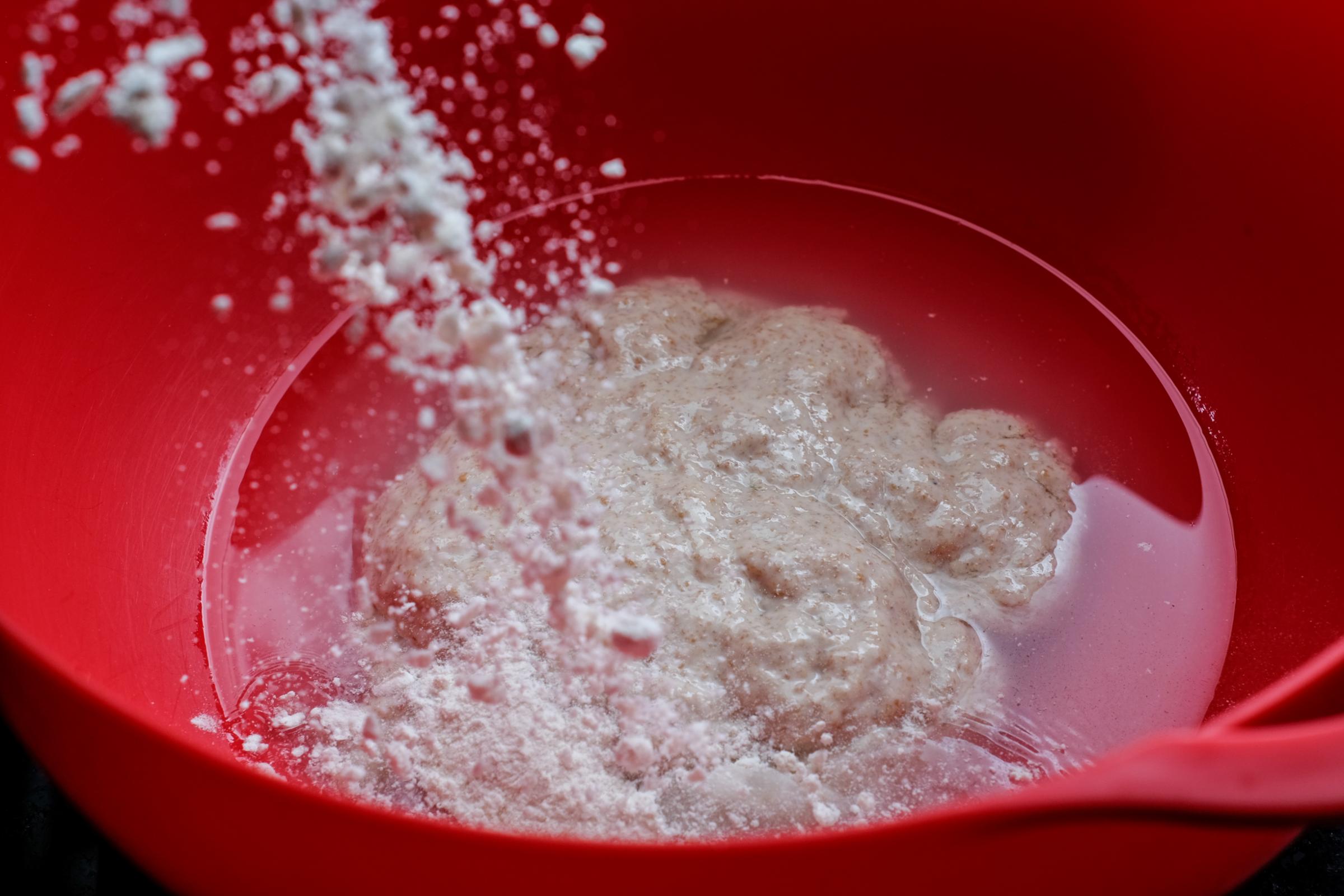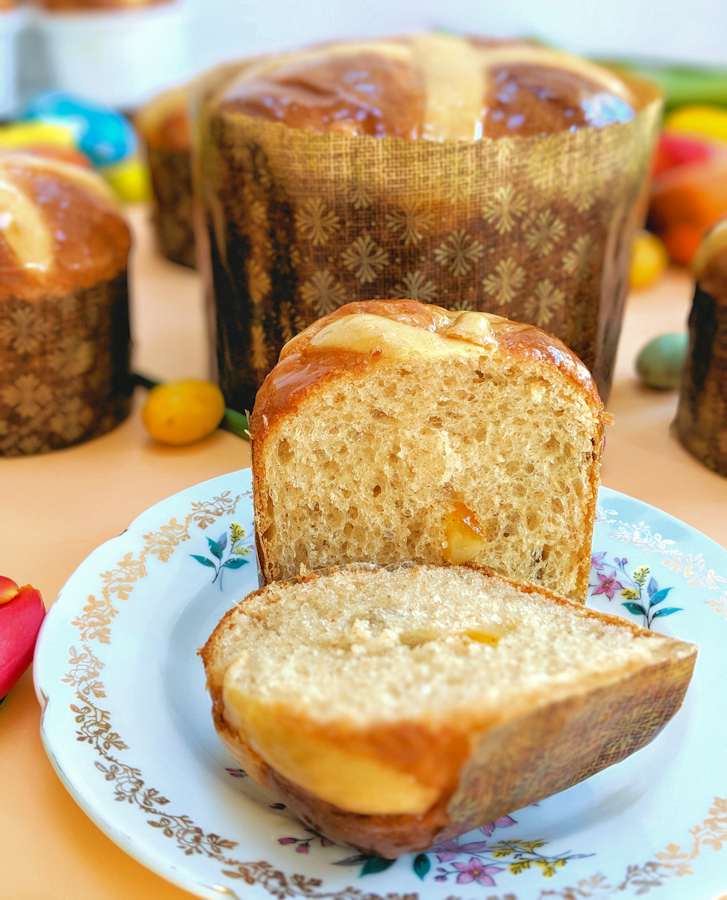
Honey Spelt Oat Porridge Sourdough with Cranberries, Mixed Peel and Sunflower Seeds

Time for Easter so that means a fruit bread is “de rigueur”. I tweaked and adapted a version that I made for Canadian Thanksgiving back in October.
Makes 3 loaves
Levain
148 g bread flour (I used a combo of spelt bran and sifted flour as well as bread flour)
118 g water
30 g starter
Porridge
125 g large flake oats
25 g oat bran (combo of oat bran and spelt bran)
345 g water
75 g plain yogurt
Main dough
633 g unbleached flour
17 g vital wheat gluten
302 g freshly milled and sifted spelt flour from 347 g Spelt berries
50 g freshly ground flax seeds
75 g dried cranberries
75 g candied mixed peel
75 g toasted sunflower seeds
50 g honey
300 g apple yeast water
250 g water
22 g sea salt
266 g levain
A couple of days before:
- Mill 347 g of Spelt berries and sift to obtain ~302 g of sifted flour and ~45 g of bran. Use 302 g of the sifted flour for the main dough and reserve the bran and the remaining few grams of sifted flour to revive or feed the starter.
- Revive or feed your levain every 12 hours or so for a day or two to have it very active. Use the bran from milling the Spelt to feed it.
The night before:
Porridge
- Toast 125 g of large flake oats. When toasted, add 25 g of oat bran to the oats. I ran out of oat bran so I added some Spelt bran to top up to the right amount. Mix together 345 g of water and 75 g of organic plain yogurt. Pour 3/4 of the water/yogurt mixture into the oats and cook on medium heat until water is absorbed. Add the remainder of the water/yogurt mixture and cook on low heat for a few minutes. Cover and cool overnight. (This can be done in the morning of but I prefer doing the night before and leaving it to cool overnight to room temp.)
Levain
- Mix 30 g of starter with the 148 bread flour (I used up the remainder of the bran and the sifted spelt flour and topped up with bread flour. Ratio ended up being about 1/3 bran/sifted flour to 2/3 bread flour.) and 118 g of water. Let rise overnight.
Final Mix and Bake:
- In a large bowl, place 633 g of unbleached flour, 17 g vital wheat gluten, 302 g of freshly milled spelt flour, and 50 g of freshly ground flax seed, and stir well to distribute the vital wheat gluten. Add the 75 g of dried cranberries, 75 g of mixed peel, 75 g sunflower seeds (toasted in a dry frying pan), mix again and then add all of the oat porridge, 50 g of honey, 300 g of apple yeast water and 250 g of filtered water. Mix well and let the mixture sit for a couple of hours.
- Add 22 g of sea salt and 266 g of 80% levain. Mix in well using folding and pinching until you see some gluten development which takes about 5-10 minutes.
- Let rest 30 minutes and do a set of folds. Repeat two more times 45 minutes apart and then let sit in a warm place until risen 50-60%. There should be irregular sized bubbles visible through the walls of your container (hopefully it is transparent or translucent, otherwise, this may be a feat for Superman. ;-) ) and the dough should feel very aerated or billowy. This took about 5 hours. It probably took that long because the ayw was right out of the fridge.
- Divide into 3 equal portions of about 890 grams and do a loose pre-shape. Let rest 15-20 minutes and then shape fairly tightly into a boule. Place boules seam side down in rice/unbleached floured bannetons and cover with a plastic shower cap or bowl cover. Place into fridge overnight.
- In the morning, heat oven and Dutch ovens to 475 F for at least 45 minutes. Place parchment rounds in the bottom of the pots and put the loaves directly out of the fridge into the pots. You may choose to score them but this is not necessary since they are being baked seam side up. Bake at 450 F for 25 minutes, remove lids, drop temperature to 425 F and bake a further 25 minutes.

And since we are having Easter dinner with family, I said I would be bringing dessert: Carrot cake and sticky buns. The carrot cake still needs to be iced but it’s a good start.

















































